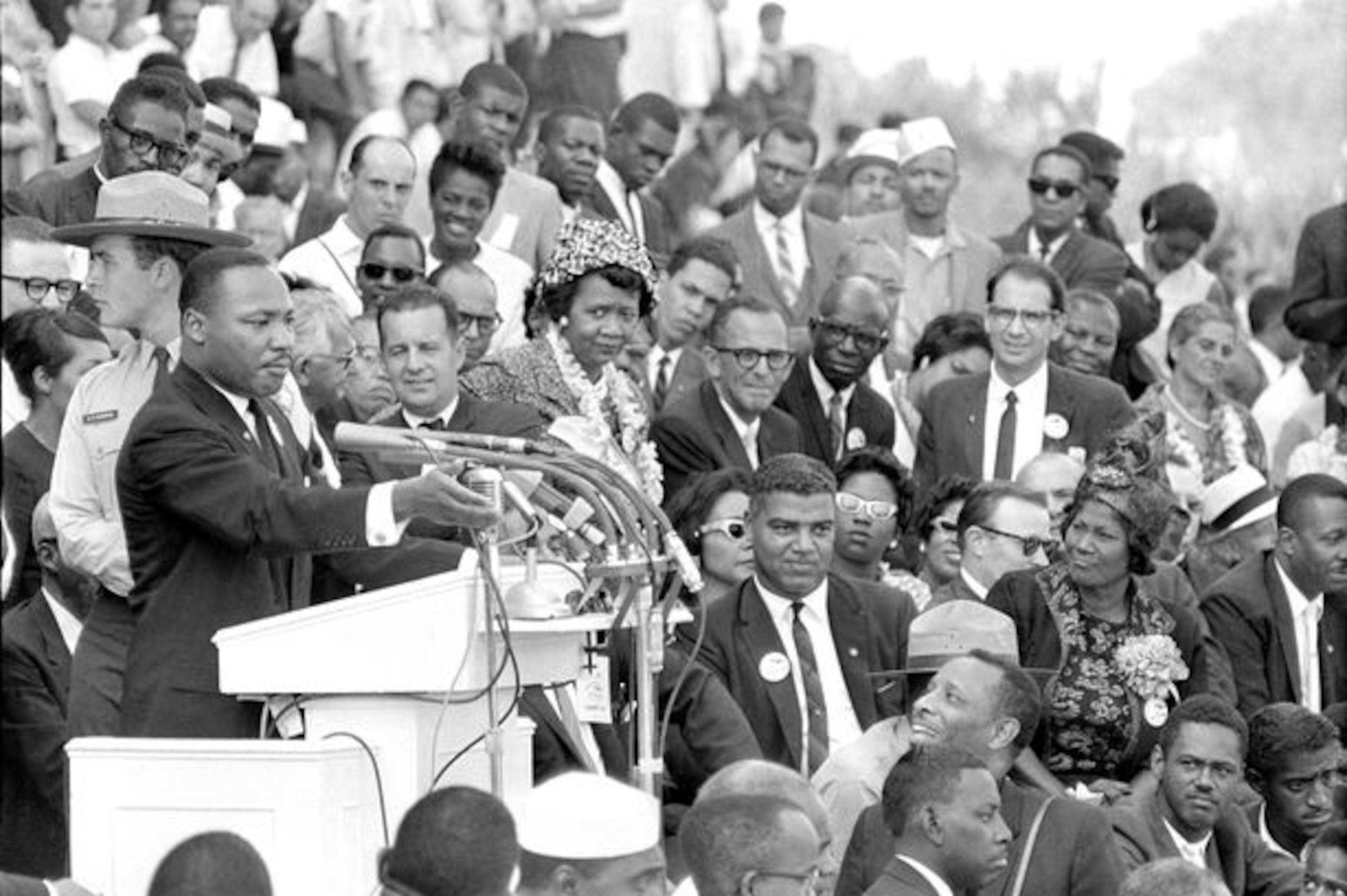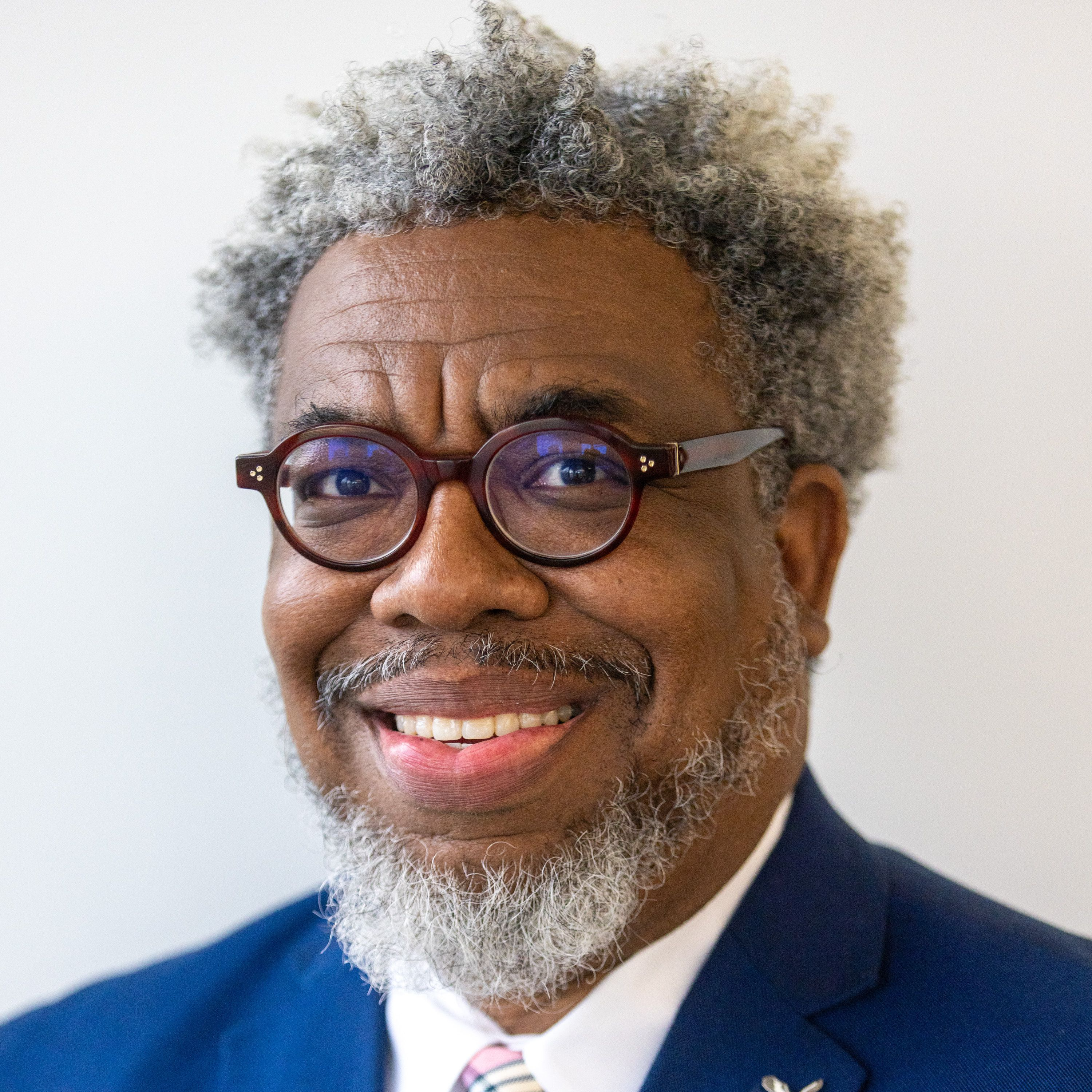On King holiday, Atlantans can view birth of ‘I have a dream’ speech

It might be hard to believe that one of the greatest speeches in history was improvised.
On Aug. 28, 1963, Martin Luther King Jr. stood before 250,000 people at the March on Washington and for 17 minutes delivered what would come to be known as his “I Have a Dream,” speech where his “four little children will one day live in a nation where they will not be judged by the color of their skin but by the content of their character.”
On Friday, the Atlanta-based National Center for Civil and Human Rights began exhibiting the original version of the speech that King was supposed to deliver that day, “Normalcy --- Never Again.”
The speech evoked images of the Bible, the Constitution, and the Declaration of Independence.
Nowhere in the typewritten manuscript with penciled notations on yellowing paper is the phrase “I Have a Dream” mentioned.

The document is one of 21 pieces from the vast Morehouse College Martin Luther King Jr. Collection that the center has included in its spring exhibition, which focuses on the 60th anniversary of the March on Washington.
Lance Wheeler, the center’s director of exhibitions, said the original version of the speech, considering what it became that August afternoon, offers a glimpse of King’s spontaneity and evolution as a thinker and civil rights leader.
“I want people to understand that he was really working on that speech up until the wee morning of the march,” said Wheeler. “It shows that fighting for equality doesn’t just take individuals, but people. This shows that he was moved, and it is a relationship of inspiration.”
The exhibit, “Now Is the Time: Remembering the Legacy of the March on Washington for Jobs and Freedom,” is part of a weekend commemoration planned by the center ahead of Martin Luther King Jr. Day, Monday’s federal holiday. King, assassinated in 1968, would have marked his 94th birthday on Sunday.

Aside from the 60th anniversary of the March on Washington, 2023 is the 40th anniversary of President Ronald Reagan signing the King holiday into law, making him the first Black man and first civilian to have a national holiday.
In honor of King’s birthday, Atlanta’s King Center was scheduled to host its annual awards program on Saturday night. On Monday, Bryan Stevenson, founder and executive director of the Equal Justice Initiative, will keynote the 54th Annual Commemorative Service at Ebenzer Baptist Church followed by a march and rally down Auburn Avenue.
On Sunday, President Joseph Biden will speak at Ebenezer as part of the church’s regular Sunday services.
“Today, more than ever, there is a need for humanity to work towards creating a more just, humane, equitable, and peaceful world, where the triple evils of racism, poverty, and militarism cease to exist and love prevails,” said Bernice King, King’s youngest daughter and the CEO of the King Center. “To create that world, we must first change our minds and ensure that our means align with our ends.”
The exhibit at the National Center for Civil and Human Rights will run through Juneteenth, the June 19 federal holiday commemorating the emancipation of Black slaves.
The collection of papers, owned by Morehouse, is housed and maintained at the Archives Research Center at the Atlanta University Center Woodruff Library. The collection consists of roughly 13,000 artifacts that were rescued in 2006 from the basement of Coretta Scott King, King’s wife.
The papers were headed for auction until former Atlanta mayor Shirley Franklin raised $32 million to keep them in Atlanta. Dozens of scholars have researched them, hundreds of students have studied them, and thousands of tourists, through viewings, have marveled over the writings, which chart the intellectual development of one of the 20th century’s leading figures.
“I hope when people see these papers, they see a different side of not only Dr. King, but the movement itself,” said Sarah Tanner, head of the Archives Research Center at the AUC Woodruff Library. “It gives people more than what you remember from 7th-grade history class — a deeper dive into the personal lives of the men and women and what it means to collaborate and work together and against each other to create a larger movement.”

Aside from the King documents, the current exhibit will also explore the writings of people who were around King on Aug. 28, 1963, including correspondences from civil rights activists Josephine Baker, James Farmer, Whitney Young, Roy Wilkins and Rabbi Joachim Prinz.
It also looks at the historical significance of 1963, the year that James Meredith, the first Black student at the University of Mississippi, graduated; civil rights leader Medgar Evers was assassinated in Jackson, Mississippi; and four little girls were killed in a Birmingham, Alabama church bombing.
“We really wanted to highlight this special day, but we also wanted to look at the impact of that day,” Wheeler said. “Out of this movement came the Civil Rights Act of 1964, the Voting Rights Act of 1965 and the Fair Housing Act of 1968. And we understand now, that in 2019, the Black Lives Matter movement stems from what happened at the March on Washington.”
Just one year before winning the 1964 Nobel Peace Prize, King’s “I Have a Dream” speech solidified him as America’s most important civil rights figure. According to several accounts, including King’s former speechwriter Clarence B. Jones, who helped write “Normalcy --- Never Again,” it almost never happened.
King was about 12 minutes into what was supposed to be a seven-minute speech at the Lincoln Memorial when he suddenly shifted.
King had been toying with the idea of a “dream” for about a year. In a Nov. 27, 1962 speech in tiny Rocky Mount, North Carolina he had said: “And so, my friends of Rocky Mount, I have a dream tonight. It is a dream rooted deeply in the American dream. I have a dream that one day right here in Rocky Mountain, North Carolina, the sons of former slaves and the sons of former slave owners will meet at the table of brotherhood, knowing that out of one blood God made all men to dwell upon the face of the earth.”

In Detroit in June of 1963, just two months before the March on Washington, he said, “I have a dream this afternoon that one day, right here in Detroit, Negroes will be able to buy a house or rent a house anywhere that their money will carry them, and they will be able to get a job.”
Gospel great Mahalia Jackson, who was in the audience that day in Detroit, was sitting behind King during his speech at the March on Washington.
“Tell ‘em about the dream, Martin,” Jackson reportedly shouted. “Tell ‘em about the dream.”
King uncharacteristically paused.
“He sort of looked over at her,” Jones told the AJC in 2017. “He took the text and moved it to the left side of the lectern. I looked at the person next to me and said, ‘These people don’t know it, but they are about to go to church.’”



